Text & Photography by Simone Marcato
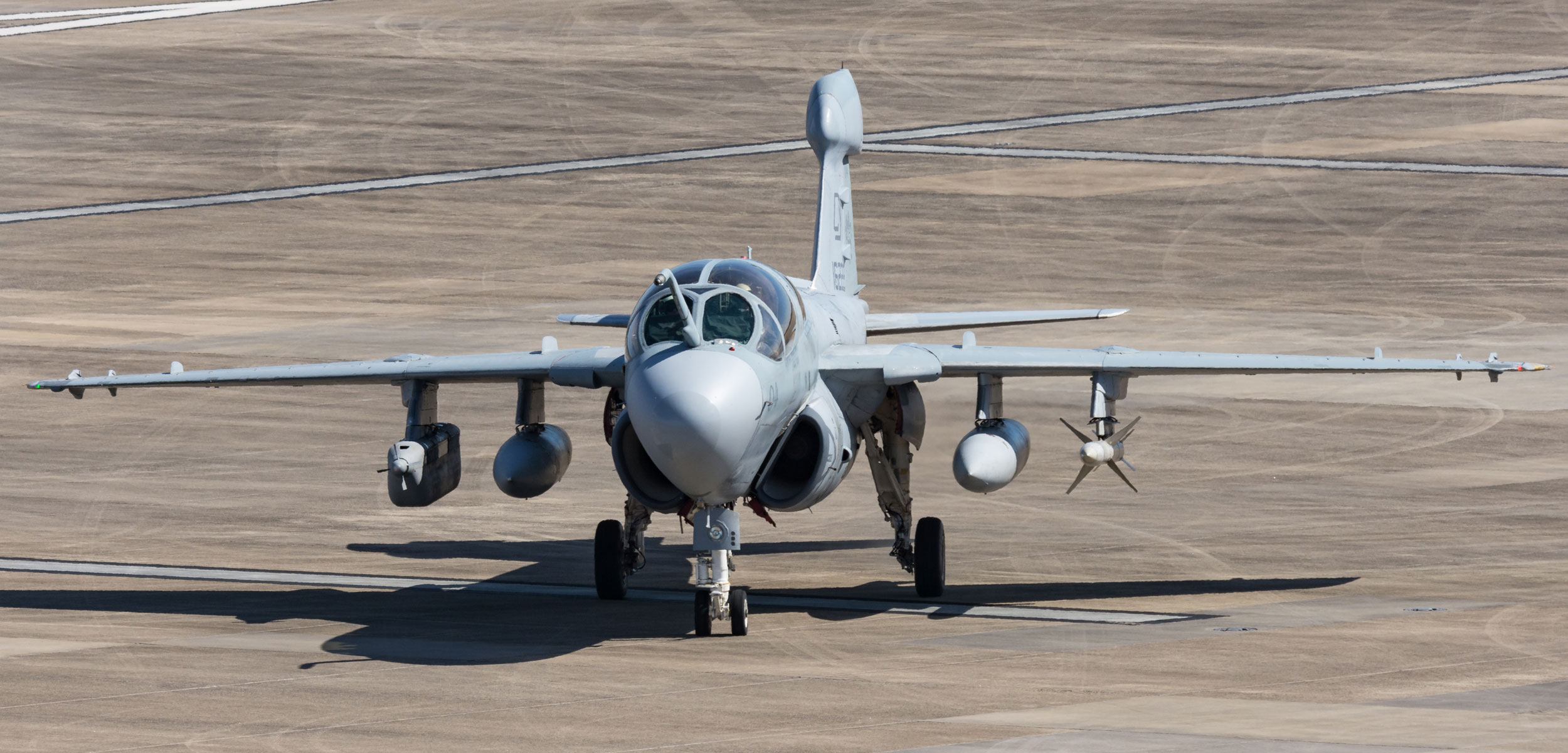
On the 8th of March 2019, with the Sundown Ceremony at the Marine Corps Air Station Cherry Point, North Carolina, the Marine Tactical Electronic Warfare Two (VMAQ-2) “Death Jesters” was deactivated. The event also marked the end, after 42 years and 260,000 flying hours, of the Northrop Grumman EA-6B Prowler’s career with the Marine Corps.
History of VMAQ-2
The origin of this unit dates back to 1952 when, during the Korean War, the Marines activated Marine Photo Reconnaissance Squadron-2 (VMJ-2) at MCAS Cherry Point, NC, followed—later that year—by a second specialist unit, the Marine Composite Squadron-2 (VMC-2). The mission of VMC-2 was providing airborne early warning and night attack capability for the 2nd Marine Air Wing. These two units cooperated with each other until 1 December 1955, when the US Marine Corps decided to combine them as Marine Composite Reconnaissance Squadron-2 (VMCJ-2).
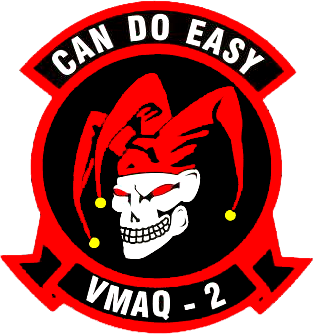
While carrying out their primary roles, the VMCJ-2 also experimented with airborne radar jamming equipment with interesting results, convincing the Marines to formulate a requirement for a dedicated electronic warfare aircraft to support the troops on the ground.
For their platform, the Marines chose the Douglas F3D-2 Skyknight—later redesigned EF-10B—which became the first jet-powered EW aircraft in the U.S. military.

During the sixties and seventies, the “Playboys” were given permission to showcase the famous bunny head, the iconic symbol of the Hugh Hefner publishing empire. The unit was first involved in the Cuban Crisis, flying with RF-8A Crusaders, and later in the Vietnam War using EA-6As “Electric Intruders” as an EW platform, providing electronic coverage for all three services, and carrying out photo-reconnaissance missions with the RF-4Bs.
In the meantime, VMCJ-2 continued to support the US Navy’s 6th Fleet, covering for the lack of Navy airborne EW assets in the Mediterranean Sea.
On 1 July 1975, after the Marines carried out a complete reorganization of its VMCJ units—the service separated its photo-recon and EW aircraft into distinct squadrons—VMCJ-2 was designated Marine Tactical Electronic Warfare Squadron-Two (VMAQ-2), becoming the sole Corps airborne electronic attack unit.
In 1977 VMAQ-2 began the transition to the Grumman EA-6B Prowler, the aircraft it would fly for the rest of its years.

VMAQ-2’s routine continued for another twelve years with its detachments cycling to Japan and onboard the US Navy’s aircraft carriers into the Mediterranean Sea, supporting, in April 1986, the Operation El Dorado Canyon against Libya.
From 1990 onward, the unit had the Middle East as its main theater of operations. First with the invasion of Kuwait by Iraq of Saddam Hussein in August 1990 and the consequent Operation Desert Shield, which was preparatory at war for the liberation of the small Persian Gulf State on January/February 1991 (Operation Desert Storm).
Only a year later, on 1 July 1992, the “Playboys” were involved in the last massive reorganization of the Corps’ airborne Electronic Warfare community. Two of the VMAQ-2’s detachments were used to activate at MCAS Cherry Point two new squadrons: VMAQ-1 and VMAQ-3. Along with VMAQ-4, these four squadrons served as part of Marine Aircraft Group FOURTEEN (MAG-14).
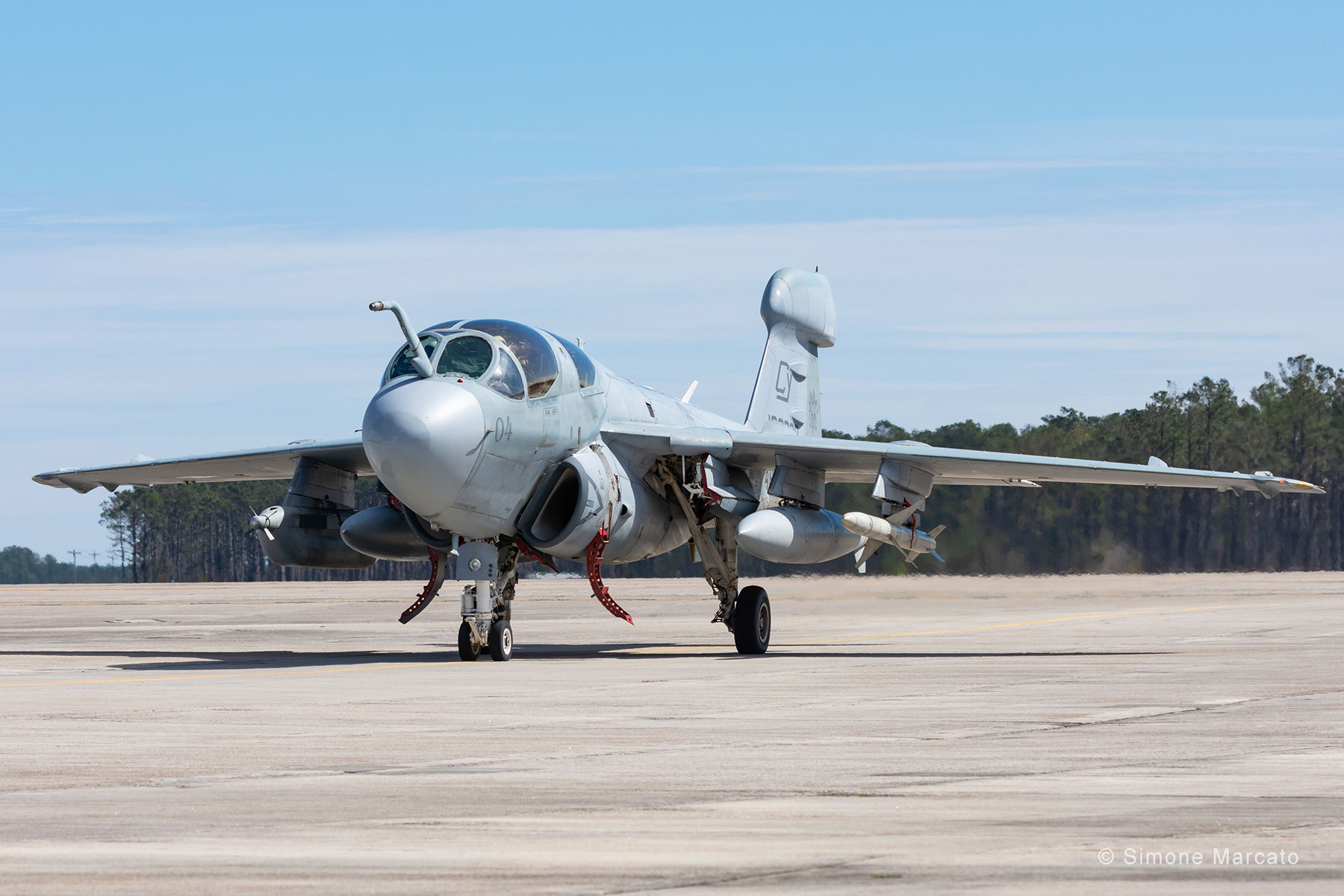
The second half of the 90s saw the “Panthers” of VMAQ-2 (this new nickname was adopted due to the fallout of the 1991 Tailhook Convention) deployed to Aviano AFB, Italy, and involved in the military operations over the former Yugoslavia, first in the Operation Decisive Endeavor and later Operation Allied Force.
During this period, the logo and the name were changed for the very last time with a macabre image and the title “Death Jesters.”.
In the XXI century, the “Death Jesters” were regularly tasked to fight the Global War on Terrorism, with deployment in the Middle East (2003, 2004, and 2008 to support Operation Iraqi Freedom, providing EW support for U.S. troops) and Afghanistan (2010 and 2012, taking part in Operation Enduring Freedom supporting the Allied Forces against the Taliban).
In 2016 VMAQ-2 went to Al Udeid, Qatar, as part of Operation Inherent Resolve (OIR), which included combat over both Iraq and Syria as well as Operation Freedom’s Sentinel, over Afghanistan.
Two years later, the “Death Jesters” traveled back there for their final scheduled deployment.

The last VMAQ-2’s deployment: the Prowler’s final combat missions
250 members of VMAQ-2, along with their 6 EA-6Bs, flew to Al-Udeid Air Base in Qatar in April 2018, spending the following seven months supporting military operations in Afghanistan, Iraq, and Syria.
Lt. Col. Andrew “Grundy” Rundle, the last commanding officer of VMAQ-2, talking about the last deployment, said:
“During the last deployment we did what we have been trained for over the years: give support to the troops on the ground. Flying out from Qatar, we have supported them directly into the battlefields. In addition, we also cooperated with the other services, also coordinating the various aircraft that flew in the different theaters in Operation Inherent Resolve (OIR) over Iraq and Operation Freedom’s Sentinel (OFS) over Afghanistan. Despite the age, the plane proved to be valid to carry out its mission, maintaining a high operational tempo. Especially thanks to the competence and skills of the maintenance personnel”.
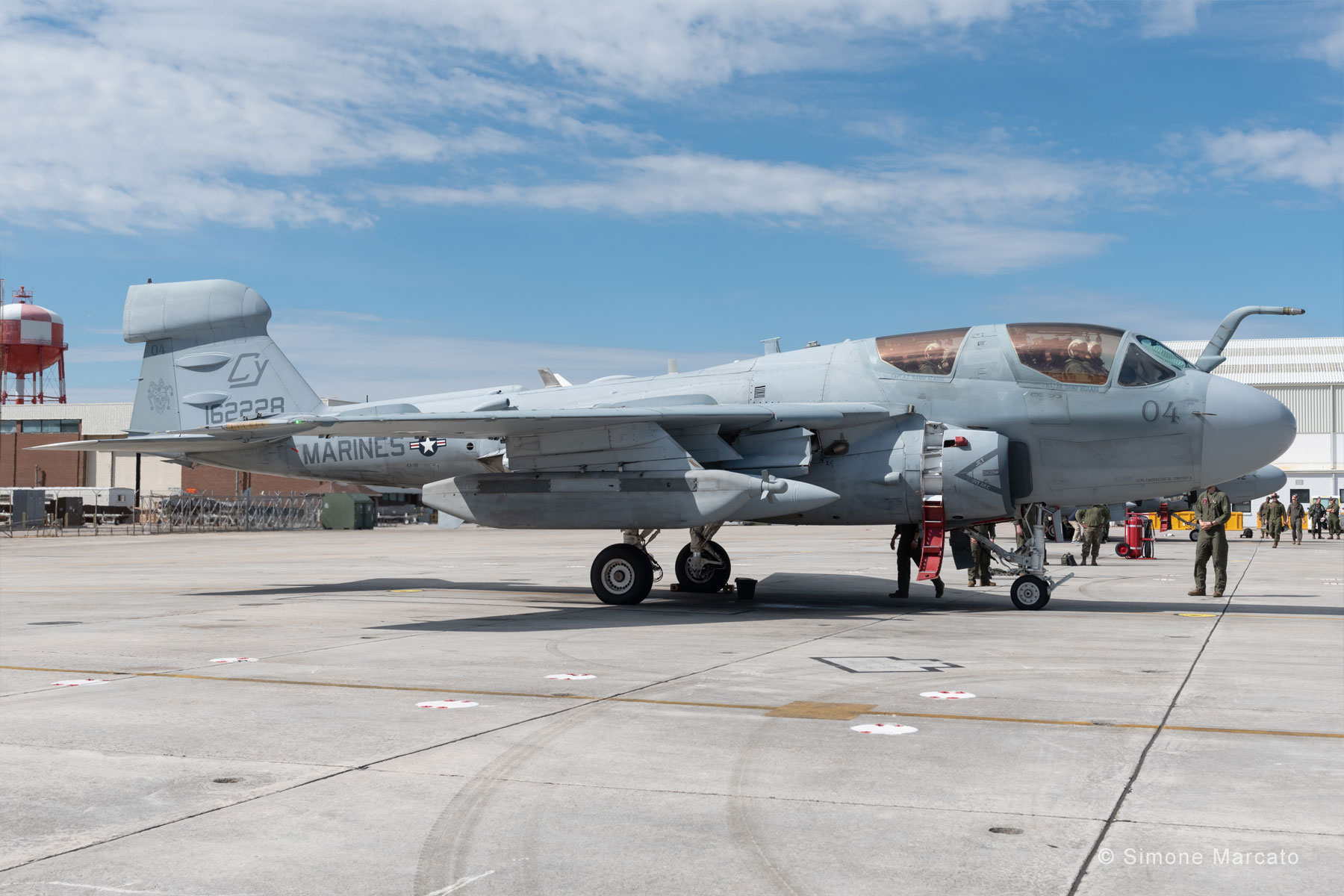
Lt. Col. Julian “Pico” Flores, the Executive Officer of VMAQ-2, added, “The VMAQ-2 and their Prowlers demonstrated their flexibility and peculiarities supporting ground forces operating in those different theaters. Starting from Al-Udeid, we carried out really long missions of 6/8 hours. Obviously what we did is classified, but I can say that it required maximum concentration to maintain the focus on what we had to do. It definitely tested the endurance of the crew and the ability to work together within the cockpit. But it makes me feel so good to know we have done a good job supporting with our capability the forces on the ground!
As you know, the Prowler is a platform for airborne electronic warfare, and it could be considered a DOD’s primary air asset. Due to this “status,” it can happen that during deployment we are not a necessary part of a big Expeditionary Marine Unit, but VMAQ-2 can be deployed as a single squadron and fall under a different command. For example, it can be the CENTCOM, and so, in that case, we are tasked with their high priorities. Sometimes it can happen that we carried out missions for the Marines, sometimes for the Army”.
As with any previous redeployment, also in this case an intense preparation and training session was carried out. Lt. Col. Rundle explains:
“In preparation for our last deployment, we took part in the WTI (Weapons and Tactics Instructor) 1-18 course at the Marine Aviation Weapons and Tactics Squadron One (MAWTS-1). We stayed at MCAS Yuma, Arizona, for several weeks, focusing on the operational aerial integration in support of a Marine Air-Ground Task Force.”
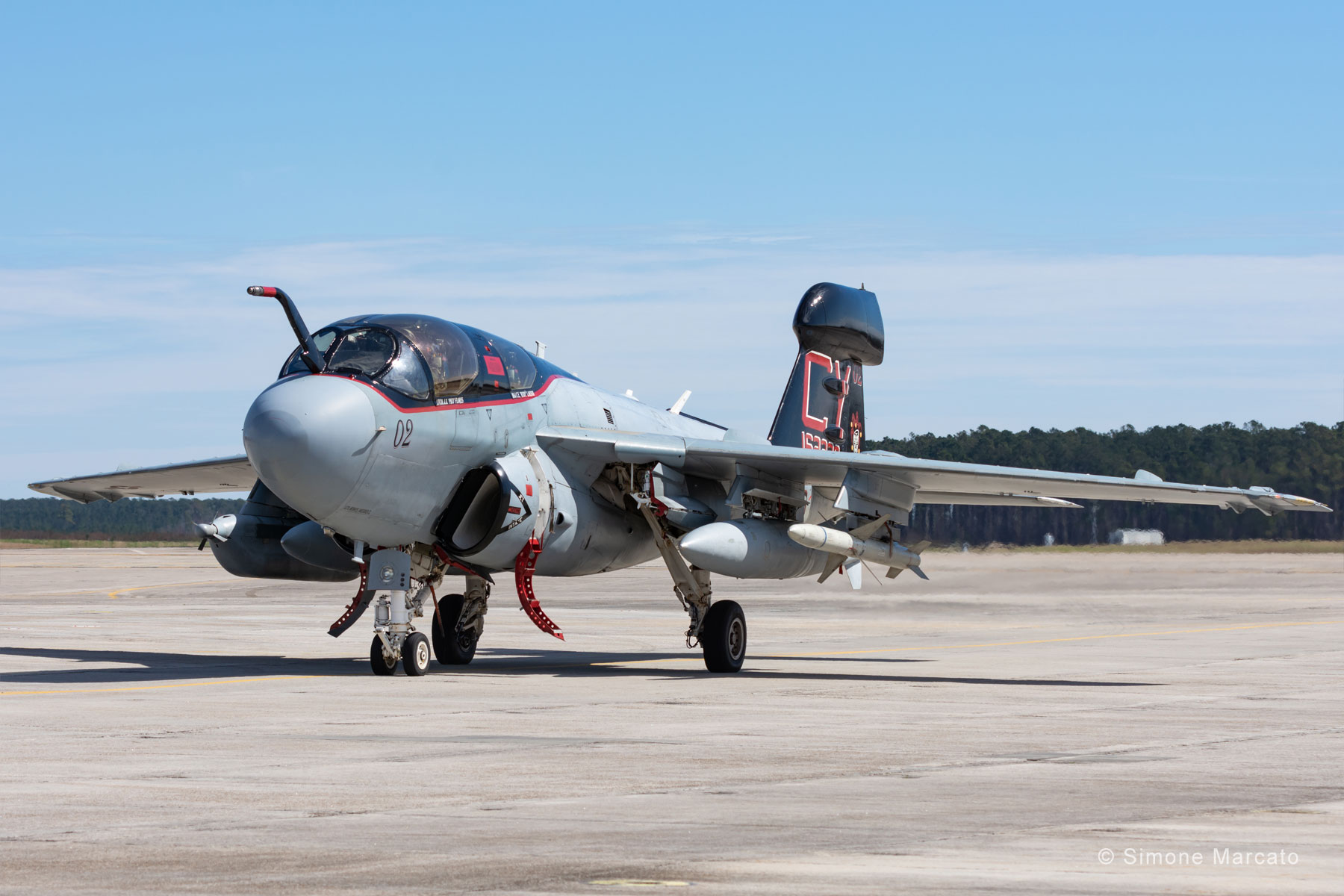
He adds, “The activity was also useful in terms of logistics. We had transferred all our Prowlers at Yuma, along with the necessary materials and all the personnel. We used cargo aircraft for the logistics, as well as tankers for refueling in flight. Exactly as it happens during overseas operations.”.
Some maintainers stated, “It’s not an easy airplane to work on. Nowadays, modern aircraft like F-35s or Super Hornets have check-up systems that say what needs to be replaced. This makes your job easier. Working on this plane is very much a different skill: all the controls are mechanical, and the hydraulic and mechanical systems have been designed with the technology of that time. They add, “The closure of VMAQ-3 and VMAQ-4 has represented a benefit for us in some way because some of their maintainers reached our unit. This made EA-6B maintenance easier, thanks to the knowledge and skills of these guys. Over the past two years we have built a really great team, and this has made it easy to keep our little Prowler’s fleet efficient. No mission was canceled due to airplane problems”.
After their return at MCAS Cherry Point, three out of six Prowlers flew to the AMARG at Davis-Monthan Air Force Base in Tucson, Arizona, and were stored there, while one went to the MAPS Museum, Ohio. The last two, which made their final mission on 28th February, headed to the Frontiers of Flight Museum in Dallas (the EA-6B “04” BuNo 162228) and to the Smithsonian National Air and Space Museum, Virginia (the specially painted EA-6B “02” BuNo 162230).
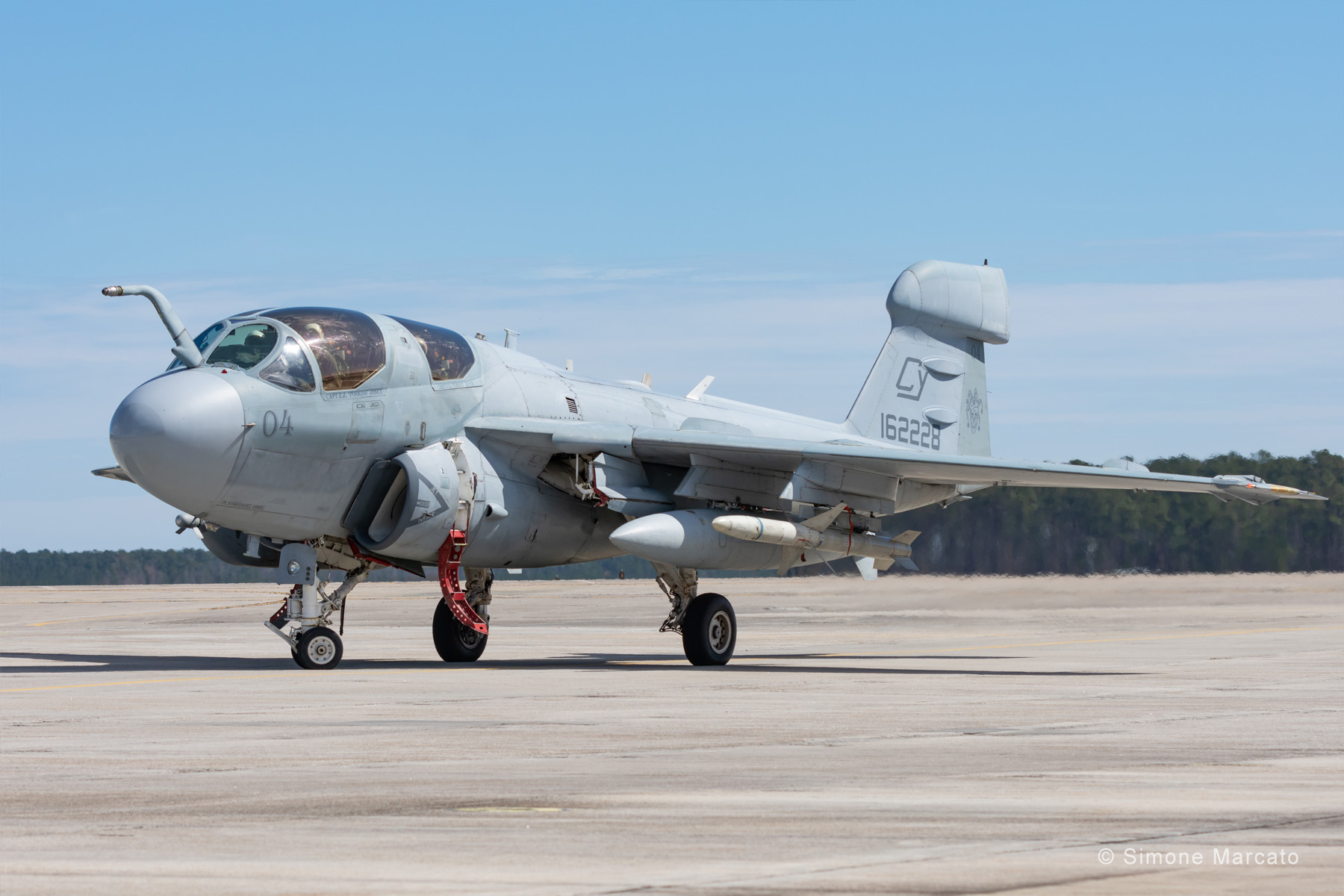
The EA-6B Prowler
The Prowler first flew on 25 May 1968, entering service with the U.S. Navy on aircraft carriers in July 1971 and with the Marine Corps during 1977. Substantially derived from the Grumman A-6 Intruder attack aircraft, this twin-engine, high subsonic aircraft has a crew of four: a pilot and three Electronic Countermeasures Officers.
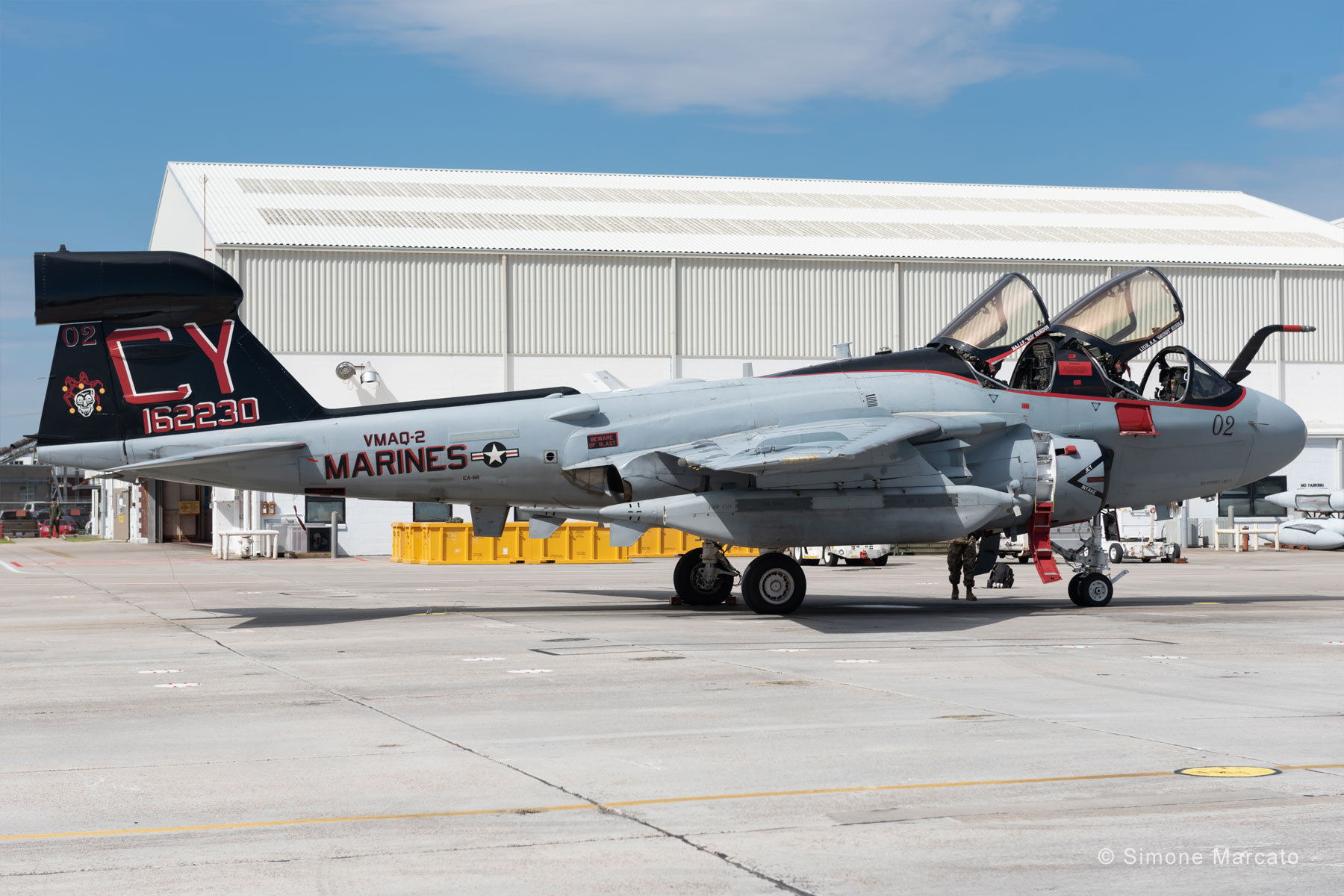
In particular, the ICAP II update gave the capability to attack its own enemy radar sites and surface-to-air missile launchers, firing the Shrike and AGM-88 HARM anti-radiation missiles.
In addition, the EA-6B was capable of intelligence missions, gathering electronic signals within a combat zone, and also served as a command-and-control aircraft for airstrike missions.
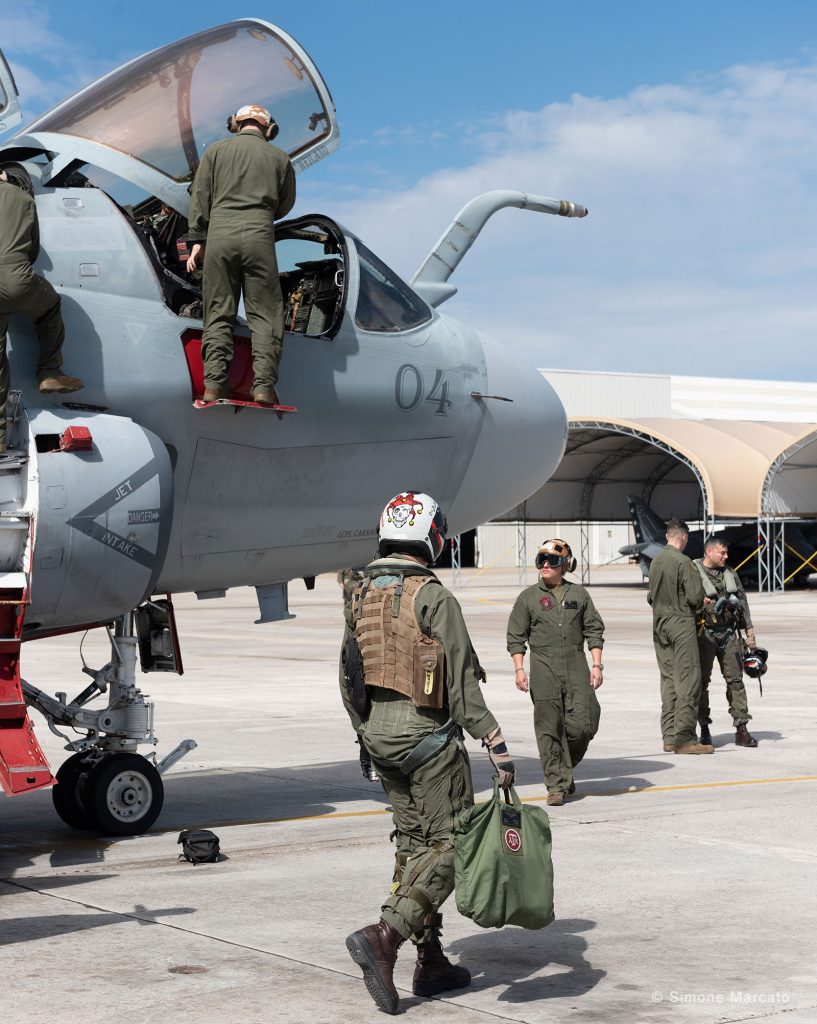
Col. Rundle, talking about the plane, said, “Simply, I love this aircraft. It is awesome! It is like a massive car! It is loud and heavy; it has a great range, and it is fast, even without an afterburner. When we are fully loaded, we are pretty fast compared with other attack airplanes. There are no aids really to reduce pilot workload. You have to fly the Prowler from take-off to landing”.
Over its more than 40 years of service, it could be considered the most significant electronic attack aircraft in history, serving in 18 Navy squadrons as well as four in the Marine Corps, with a total of 170 Prowlers built from 1970 through 1991.
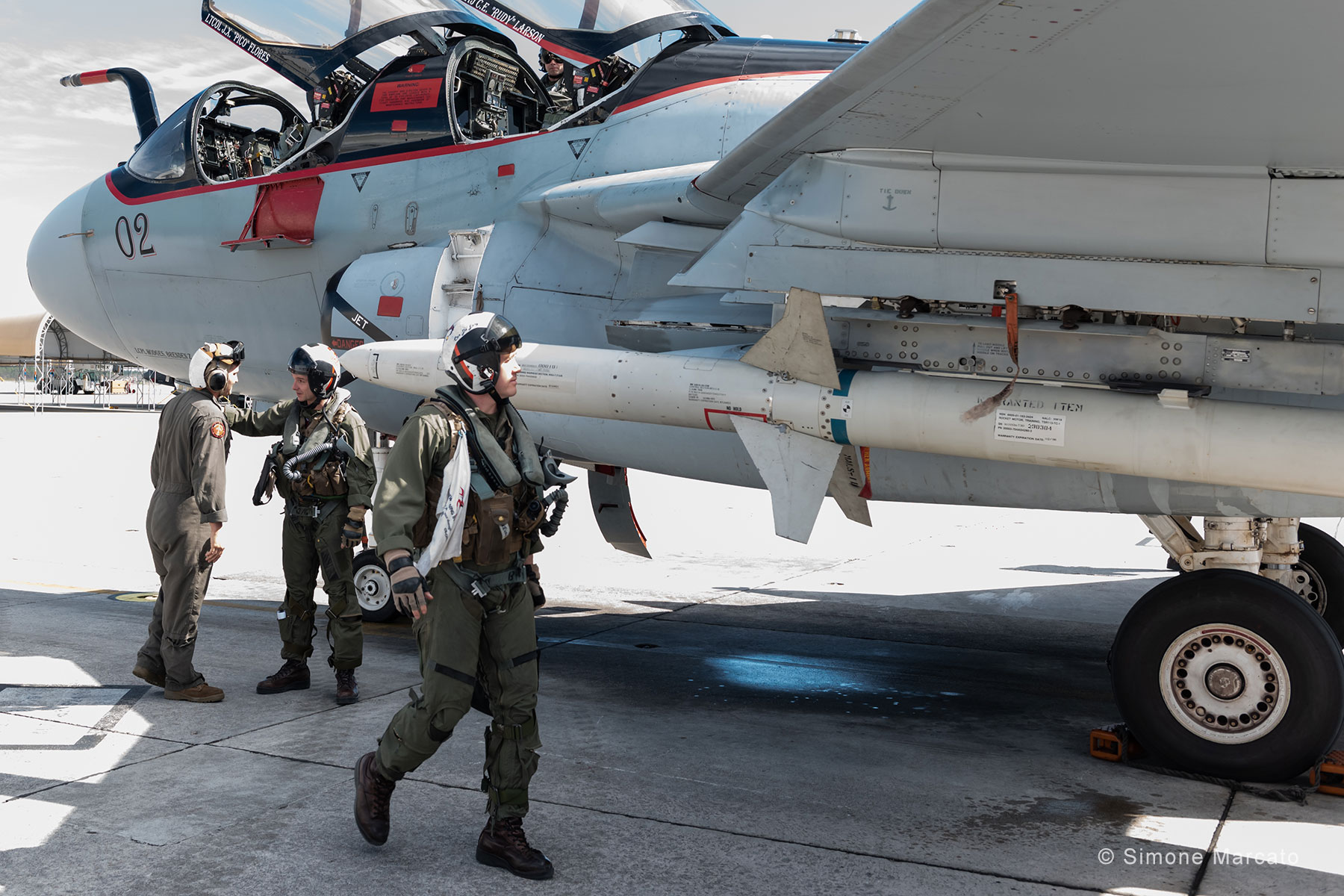
Although the EA-6B’s primary mission was to support ground-attack strikes by disrupting enemy electromagnetic activity, throughout his entire career the aircraft has been continuously updated—with improvement programs called EXCAP and ICAP—allowing it to perform a wider range of missions. Although 51 EA-6Bs have been lost in various incidents, none have ever been lost in combat.
The future of EW within the Marine Corps
Lt. Col. Rundle said the VMAQ-2 members will go on to various new roles once the squadron is deactivated. He said some plan to stay in the Marine Corps and receive new assignments, while others will retire from the military.

Despite the end of the Prowlers’ era, the need for electronic-warfare capabilities on the battlefield isn’t going away. While the Growler has replaced the Prowler within the US Navy, the USMC has chosen as a replacement its airborne EW aircraft, a more distributed strategy where every platform will have EW capabilities. In addition to the EW capabilities of its own F-35s, the new ALQ-231 INTREPID TIGER II pod has been developed and then integrated into several aerial platforms currently in service.